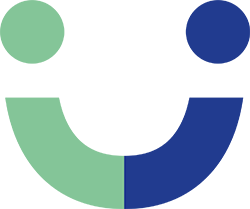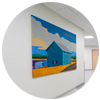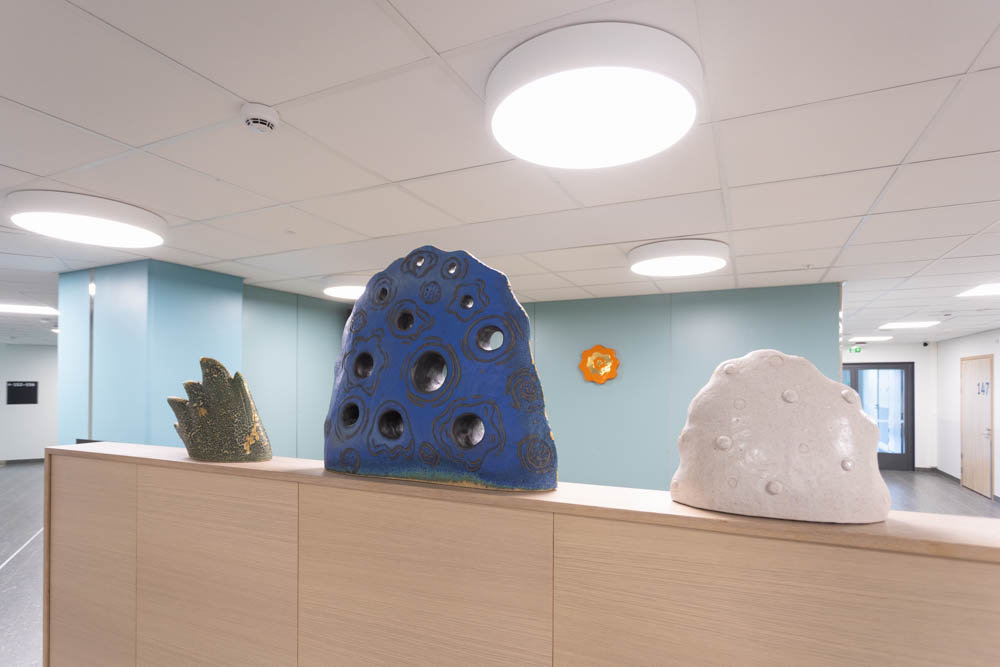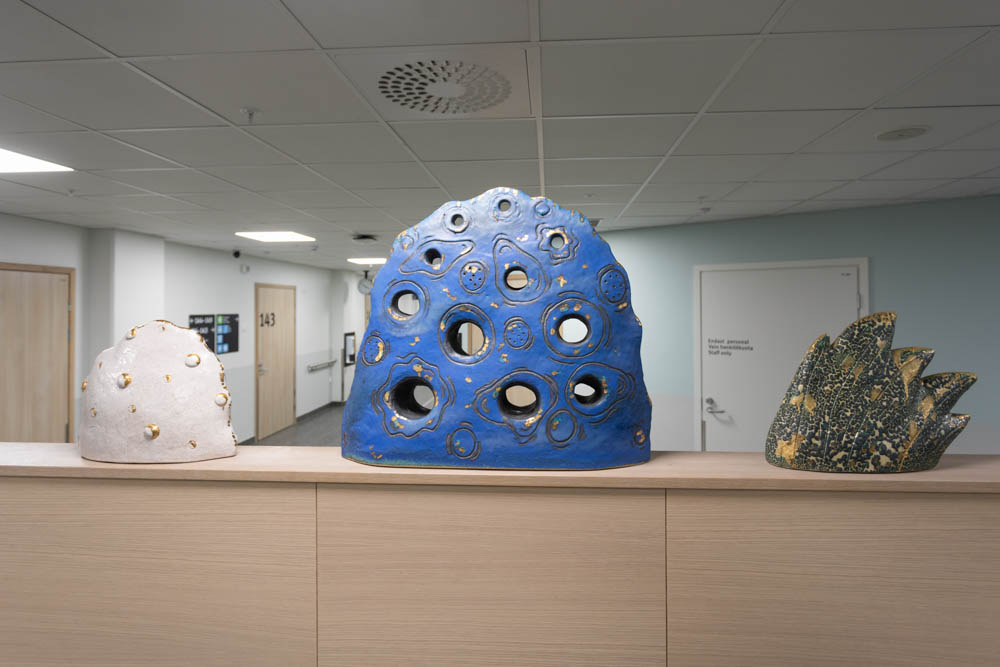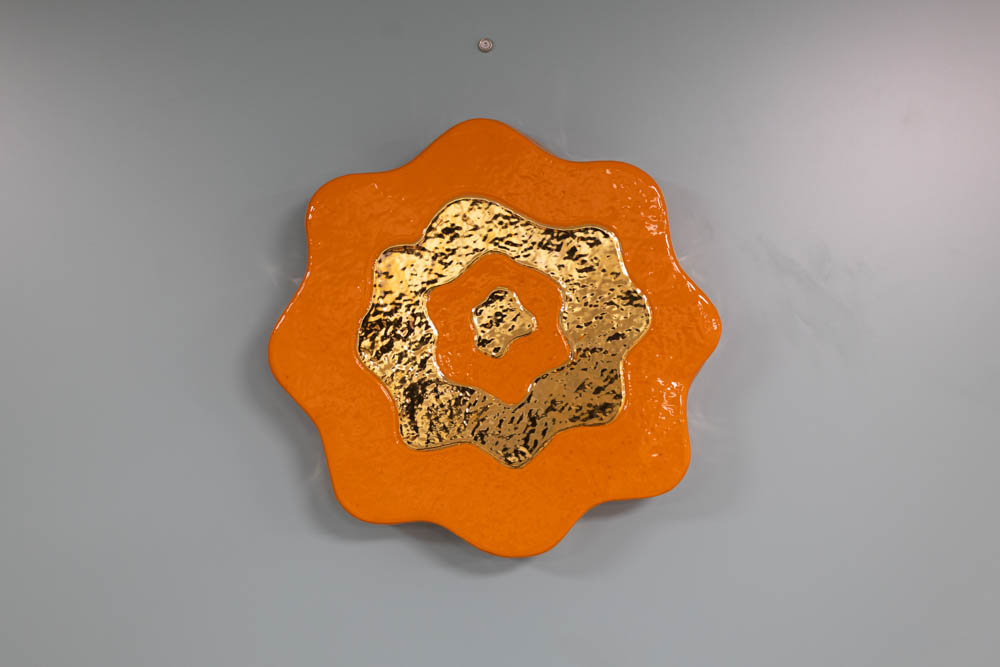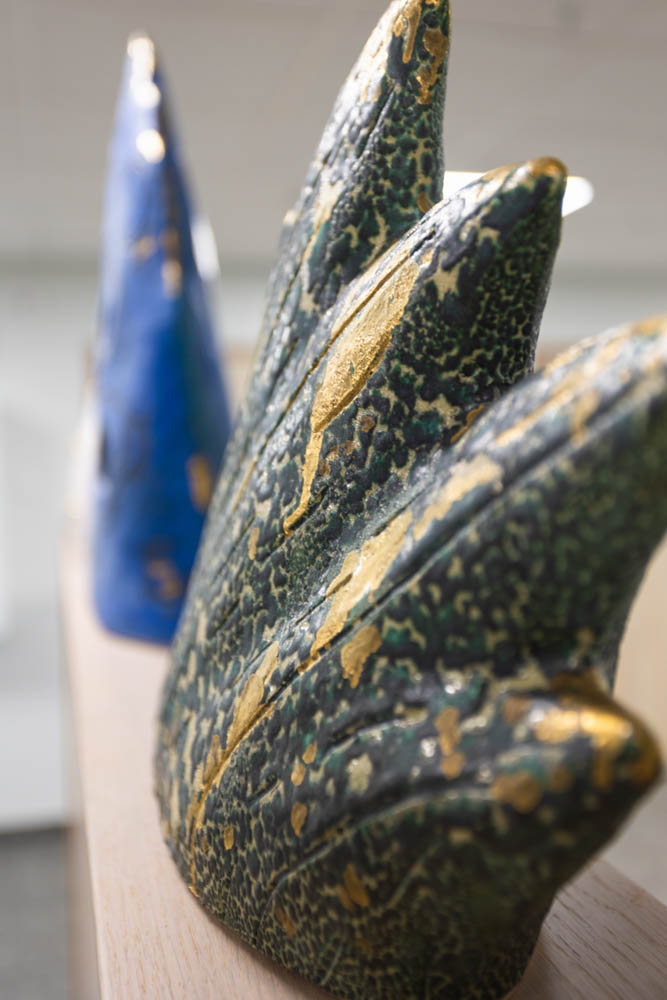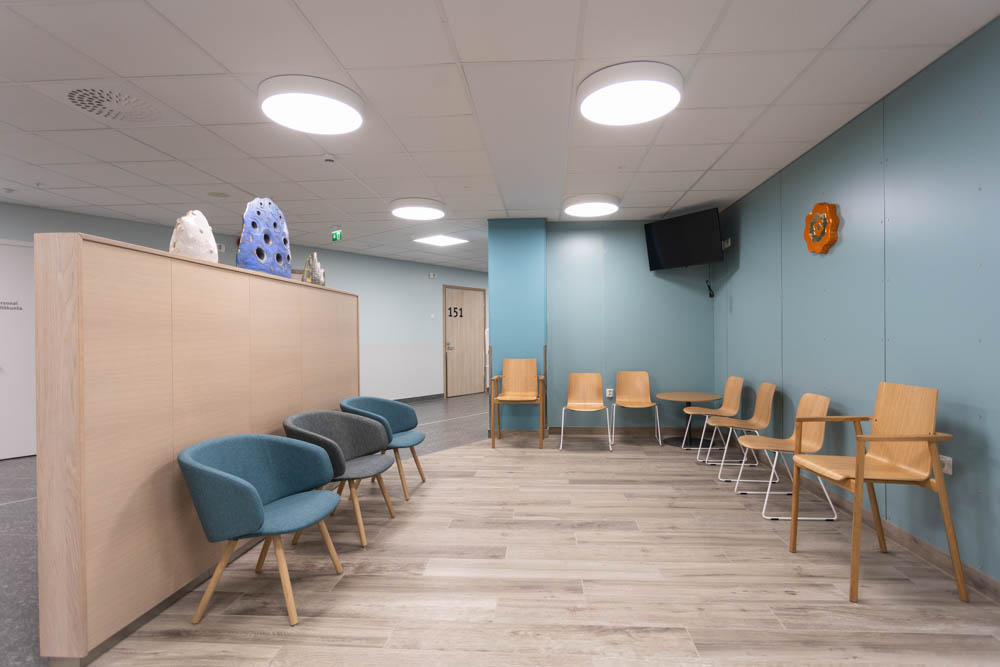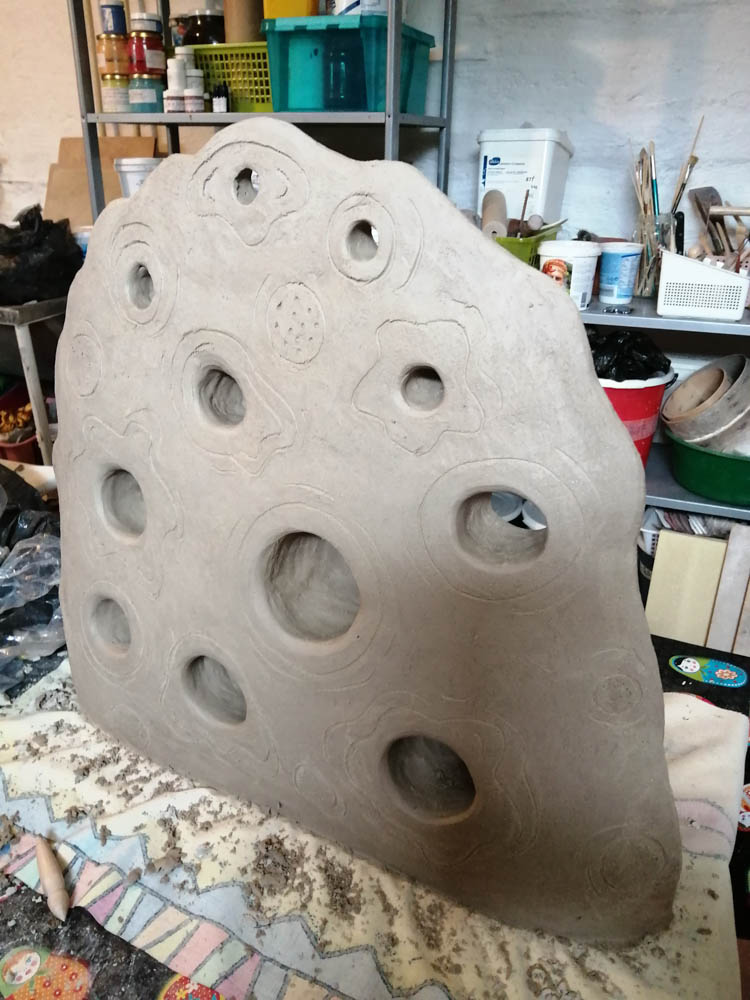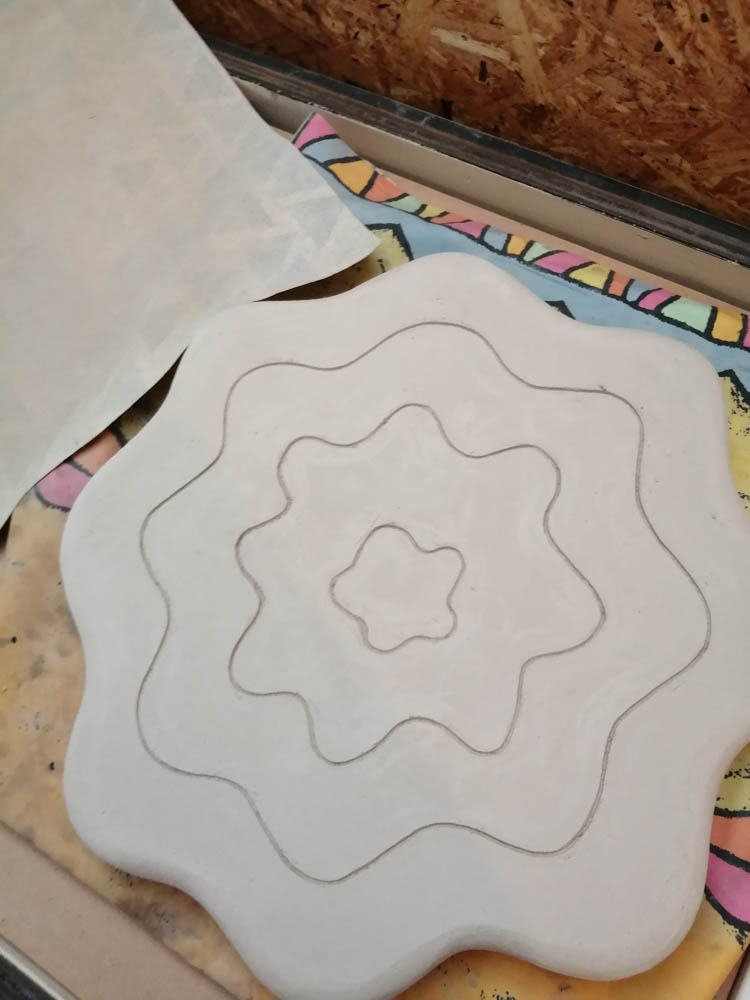
Light beneath the surface -series of sculptures
Kuvanveistäjä Paula Blåfield
Kuvanveistäjä Paula Blåfieldin keraaminen veistoskokonaisuus Vaasan keskussairaalan H-rakennuksessa kuvaa merenkurkun fladojen ja kluuvien rikasta vedenalaista maailmaa. Erilaiset vedenalaiset kasvustot loistavat auringon valaistessa niitä veden läpi.

Paula Blåfieldin taiteelle on ominaista poikkitaiteellisuus, ryhmätyö, osallistavat näyttelyt
Olen vaasalainen keraamikko ja kuvanveistäjä. Valmistuin Taideteollisesta korkeakoulusta taiteen maisteriksi vuonna 1985, ja siitä lähtien olen pitänyt lukuisia yksityis- ja yhteisnäyttelyitä Suomessa ja ulkomailla. Olen myös tehnyt lastenkulttuuritapahtumia ja työskennellyt ikäihmisten parissa erilaisissa taideprojekteissa. Ominaista tekemiselleni on poikkitaiteellisuus ja ryhmätyö, näyttelyt ovat usein osallistavia.
Photos: Sami Pulkkinen
Making the series of sculptures Light beneath the surface
Vaasan keskussairaalan H-rakennuksen teokseni on tehty korkeapolttoisesta savesta. Olen käyttänyt siinä erilaisia keraamisia lasituksia, värimetallioksideja ja posliinikultaa. Teos koostuu neljästä kappaleesta, joista kolme sijoittuu seinäkkeen päälle ja yksi, aurinkoa kuvaava, on ripustettu seinälle.
Idea syntyi, kun luin kuvauksia Pohjanlahden fladoista ja kluuveista, kuinka rannikon maan kohoaminen hitaasti kuroo umpeen matalia merenlahtia. Ensin syntyy flada, jolla on yhteys mereen, sitten kun yhteys katoaa, syntyy kluuvi, joka muuttuu makeavetiseksi järveksi. Fladat ja kluuvit tarjoavat suojaisan pienoismaailman erikoiselle kasvillisuudelle. Hapsi- ja ahvenvita, näkinpartaiset ja ärviät kurottelevat kohti auringonsäteitä. Teoksessani on kolme osaa, jotka kuvaavat tätä kiehtovaa vedenalaista maailmaa. Seinällä olevassa teoksen osassa oranssikultainen aurinko heijastaa kullanväristä valoaan seinäkkeen päällä oleviin teoksiin.
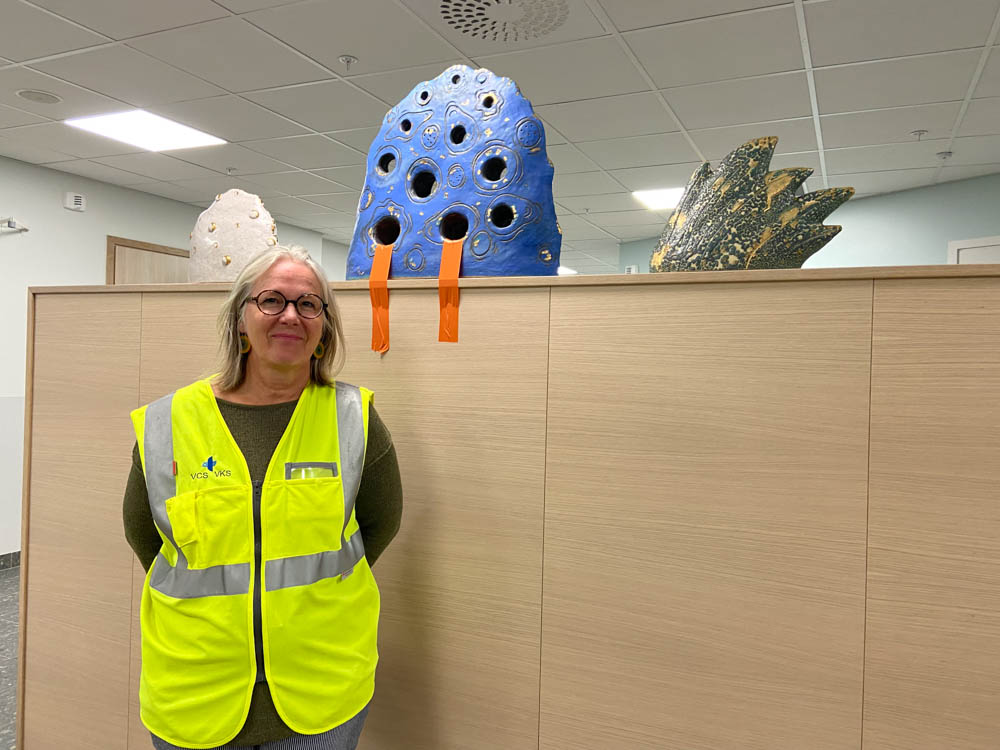
Prosessi ajatuksesta teokseen kulki luonnosteluvaiheesta koepalojen tekoon. Kokeilin keraamisten pienoismallien avulla monia erilaisia muotoja ja niihin erilaisia lasitteita. Keramiikan teko on haasteellista lasitusten yllätyksellisyyden vuoksi. Lasituksen paksuus ja polton lämpötila vaikuttavat väriin ja lopputulos näkyy vasta kun teos on valmis, jonka jälkeen sitä ei voi enää muuttaa, kuten maalausta. Käytin lopulliseen teokseen lasitusruiskua mikä muutti hieman teoksen värisävyjä. Aurinko halkesi lasituspoltossa, mutta olin tehnyt siitä paperikaavat, joten se oli helppo tehdä uudelleen. Olen tyytyväinen lopputulokseen ja lasitusten sävyt ovat sellaisia kuin suunnittelin. Keramiikan teko vie aina paljon aikaa. Teos muotoillaan, se kuivaa vähintään viikon, sitten seuraa raakapoltto, lasituspoltto ja kultapoltto. Tämä prosessi kaikkineen kestää kolmisen viikkoa.
Keramiikkateos pyrkii väreillään ja muodoillaan elävöittämään tilaa ja luomaan siihen positiivista ilmapiiriä. Teos on abstrakti ja antaa tilaa katsojan mielikuvitukselle. Sairaalaympäristö ja odotushuoneen tunnelma voi olla kävijän kannalta stressaava ja jännittävä. Kolmiulotteisen teokseni on tarkoitus olla tunnelmaltaan rauhoittava, mutta myös herättää kiinnostusta tutkia sitä eri puolilta ja eri kulmista. Värikkyys ja muotojen rikkaus houkuttelee tutkimaan ja koskettelemaan. Keramiikka sopii materiaalina erittäin hyvin sairaalaympäristöön, koska sen on täysin huoltovapaa, pölyjen pyyhkiminen riittää.
